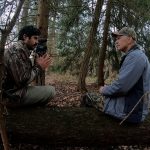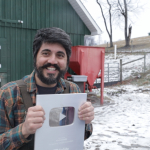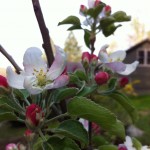On this episode of Homesteady, we are exploring the delights and dangers of foraging, or looking for and gathering wild foods. After a scare gathering mushrooms on the Homestead, Aust shares with us information on how to safely start your own foraging hobby.
******* Disclaimer: this blog and podcast are NOT a source for identifying wild plants************************************
Our guest, Jared White, is an extreme foraging enthusiast and hobbyist of The Foraging Beard on Instagram and YouTube is our guest on the show, to give us education and guidance on learning to forage. As a stay at home dad, Jared has dived into homesteading, with foraging emerging as his prominent interest. An avid photographer, his research into the flora he was photographing led him to the knowledge that lots of the plants he was photographing were edible! With his trusty Audobon Field Guide and the help of Google, Jared began to learn more and more about identifying wild edibles.
But-how do we determine what is edible? And to NOT panic when we take a bite?
Jared recommends starting with the onions. The allium tricoccum, or ramps, in particular, are great for the beginning forager. With their distinctive aroma and taste, the beginner can feel secure that they are eating the wild onion they think they are eating. Mushrooms, however, are trickier. Local and regional names can confuse a forager looking for the safely eaten variety. Using scientific names for all foraged plants helps ensure that no one finds an unwelcome variety on their dinner plate, and allows foodie enthusiasts to savor their chanterelles without fear.
What other kinds of wild edibles are out there?
Depending upon your region, the edible plants available vary. The best way to find them? Just keep looking. And looking. And looking.
After your search, how do you decide whether to take a bite? What protocols do you follow to determine whether dinner is deadly? Jared, who had his own scare after thinking he ate a death cap when he meant to eat a russula, shares these safety tips:
- If it looks like food, take a picture or a plant home, and research it thoroughly.
- Learn to identify poisonous plants, so you don’t take an accidental nibble!
- Use three sources to confirm what you found.
- Start with the foolproof four.
- Immediately go to your local ER and call Poison Control if you fear you have made a mistake.
This cautionary tale shows you can never be too careful.
Does Accountant Mike think foraging is worth the risks? Could he possibly be anti FREE FOOD? Or does the math add up in a surprising way? Listen to find out if gathering gourmet food pays off not only for your curiosity, but your wallet.
Thank you to our sponsors! When your schedule prevents you from foraging your dinner, let HelloFresh deliver dinner to you in an easy, pre-portioned kit. Use promocode Homesteady30 to get $30 off your first meal delivery.
Are you huge fan of the show? Join the Homesteady Pioneers by following this link and for only five dollars a month, you get bonus podcasts, free online webinars, discount codes (on awesome products like these, or maybe some Russian comfrey), and more! Dave from Northeast Edible will also give you a Pioneer discount on planning your orchard. Become a Pioneer today!
We love hearing from you! Have you filled out our survey? You will be entered to win a $100 gift card from Tractor Supply Co. Want to hear more about what’s coming up next? Join our mailing list for up to the minute updates on our YouTube Channel and podcast.
Want still more Homesteady? Follow us on Instagram! You can follow Aust @homesteadyshow (see the morels for yourself) and Alexia, The Suburban Escapee, @suburbanescapee (I have finally grown something as opposed to killing it!).



I love the show. But this one disappointed me a little. I was expecting a show about foraging for wild edibles. Instead it’s a show about mushrooms and ramps only. Even the accounting section is only about this. So many things were left out. Chicory, chickweed, cattail, burdock, dandelion, blackberry, plantain, wood sorrel, thistle, clover, wild carrot, wild strawberry, clover, purslane…. and this isn’t mentioning any wild fruit trees or nuts. A wild edible is almost everywhere. And there are many people that use wild edibles as part of their daily food intake , replacing some of their groceries. Using only one species in the accountant Mike section and using someone that doesn’t replace groceries with it is not a fair judgment. It’s like asking if meat chickens are a good choice for a vegan. But over all I love the podcast and it was a good show even if it wasn’t what I expected. Keep them coming more and more.
There are so many wild edibles out there for sure! Cant possibly cover them all in a 1 hour show, guess we will have to do another episode in the future 😉
You’re so right, there’s much more to cover!
I did have a detailed outline in front of me with many more edibles (not just mushrooms) but the conversation just evolved the way it did ?.
Plus Austin’s asides and the beautiful editing made it feel like it was much more than just clips from our live show.
Great job putting this together Aust (and the rest of the Homesteady team)!
Thanks!
Thanks Jared! Will have to revisit in the future and cover more wild edibles… see if we can turn that thumb upside down… or is it right side up?
I was also very disappointed. With all the Edibles you mentioned, perhaps you can do one of these shows? Or a YouTube video?